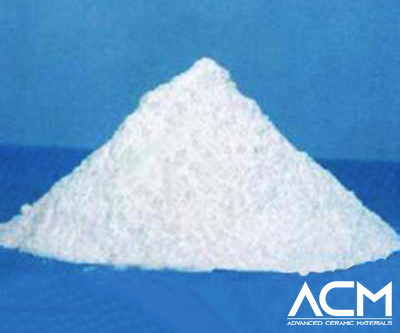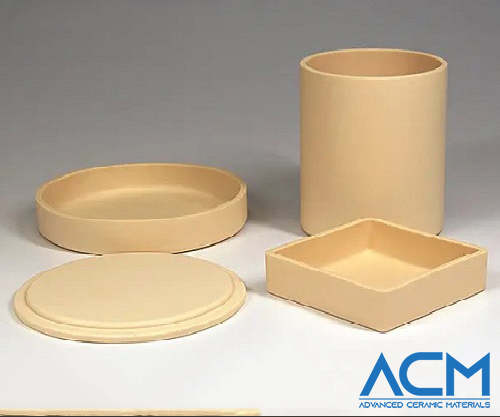Different Manufacturing Processes of Magnesium Oxide
Magnesium oxide (MgO) is an important material used in many industries, including construction, agriculture, medicine, and chemicals. There are different types of magnesium oxide, each produced by various methods to achieve unique properties. The main types are light magnesium oxide, heavy magnesium oxide, lightly calcined magnesium oxide, and heavily calcined magnesium oxide (also called fused magnesium oxide). Knowing these production methods helps in selecting the right type for different uses.
1. Light Magnesium Oxide
Production Process:
Light magnesium oxide is made through the precipitation method. This process begins with magnesium-containing compounds such as magnesium chloride or magnesium sulfate. These compounds are dissolved in water, and an alkaline substance like sodium hydroxide or lime is added. This reaction produces magnesium hydroxide, which is a solid precipitate. The magnesium hydroxide is then filtered, washed, and dried to remove impurities. Next, it is heated (calcined) at a relatively low temperature, usually between 700°C and 1000°C. This heating process removes water molecules, turning the magnesium hydroxide into light magnesium oxide.
Characteristics:
-
Light magnesium oxide has a low bulk density and a high specific surface area.
-
It is a fine, white powder that is light, fluffy, and highly reactive.
-
It is porous, which makes it good at absorbing liquids and easy to mix with other materials.
Applications:
-
Used in the rubber and plastics industries as a filler to improve strength and durability.
-
Serves as an antacid and laxative in the pharmaceutical industry.
-
Also used in ceramics, glass production, and as a raw material in chemical manufacturing.
2. Heavy Magnesium Oxide
Production Process:
Heavy magnesium oxide, also known as hard-burned magnesium oxide or dense magnesium oxide, is produced by heating magnesium carbonate or magnesium hydroxide to higher temperatures, typically between 1000°C and 1500°C. This high-temperature treatment causes the magnesium oxide particles to sinter and fuse together, resulting in a material with higher density and reduced reactivity, making it suitable for applications requiring enhanced mechanical strength, such as refractory linings, construction materials, and industrial fillers.
Characteristics:
-
Heavy magnesium oxide has a high bulk density and a low specific surface area.
-
It appears as a coarse powder or granules and is much denser than light magnesium oxide.
-
It is less reactive due to the sintering that occurs during the high-temperature heating process.
Applications:
-
Often used in the construction industry as a refractory material because it can withstand high temperatures.
-
Added to animal feed as a magnesium supplement.
-
Used in wastewater treatment to neutralize acidic water and remove harmful substances.
3. Lightly Calcined Magnesium Oxide
Production Process:
Lightly calcined magnesium oxide, sometimes called caustic-calcined magnesium oxide, is produced by heating magnesium hydroxide at a lower temperature, around 700°C to 900°C. The process is similar to making light magnesium oxide, but it is carefully controlled to produce a slightly denser material with different properties.
Characteristics:
-
Lightly calcined magnesium oxide has a medium bulk density, higher than light magnesium oxide but lower than heavy magnesium oxide.
-
It has moderate reactivity and a specific surface area that is lower than light magnesium oxide.
-
The material is suited for applications that require a balance between strength and reactivity.
Applications:
-
Used in the production of magnesium-based cements, which are known for their quick-setting properties and high durability.
-
Acts as an intermediate in the production of magnesium salts and other compounds.
-
Also serves as a stabilizer in chemical reactions and processes.
4. Heavily Calcined Magnesium Oxide (Fused Magnesium Oxide)
Production Process:
Heavily calcined magnesium oxide, or fused magnesium oxide, is produced by heating magnesium carbonate, magnesium hydroxide, or magnesium oxide to very high temperatures, typically above 2800°C. This process, known as fusion, involves melting the material in an electric arc furnace. The molten material is cooled slowly, allowing it to crystallize into a dense, hard form.
Characteristics:
-
Fused magnesium oxide has very low reactivity and high density.
-
It is stable at extremely high temperatures, making it ideal for use in refractory applications.
-
It also has excellent electrical insulation properties and is resistant to chemical corrosion.
Applications:
-
Primarily used in high-temperature refractories, such as linings for furnaces and kilns.
-
Used to manufacture crucibles and other equipment that needs to resist high temperatures.
-
In the electrical industry, it serves as an insulating material for heating elements and high-temperature cables.
Conclusion
Magnesium oxide comes in different forms, each with its unique properties and uses. Light magnesium oxide is best for applications that need high reactivity and absorbency, such as in rubber, plastics, and medicines. Heavy magnesium oxide is ideal for uses that require high density and stability, like in construction materials and animal feed. Lightly calcined magnesium oxide offers a balance between density and reactivity, making it useful for making magnesium cement and other compounds. Fused magnesium oxide, with its low reactivity and high heat resistance, is perfect for high-temperature refractories and electrical insulators.
Companies like Advanced Ceramic Materials (ACM) supply different types of magnesium oxide to meet the specific needs of various industries. Knowing how each type is made helps businesses choose the right magnesium oxide for the best results in their products and processes.
{{item.content}}
LEVE A REPLY
{{item.children[0].content}}
{{item.content}}
LEAVE A REPLY
SUBSCRIBE OUR NEWSLETTER
- Boron Nitride in Cosmetics: Enhancing Performance and Sensory Appeal
- Maximize MOCVD Yield and Purity with Hexagonal Boron Nitride Setters
- What Are the Advantages and Uses of Boron Nitride Ceramic Sheet?
- The Compression Annealing Advantage for Pyrolytic Boron Nitride
- Beyond Insulation: The Surprising Spectrum of Ceramic Thermal Conductivity














